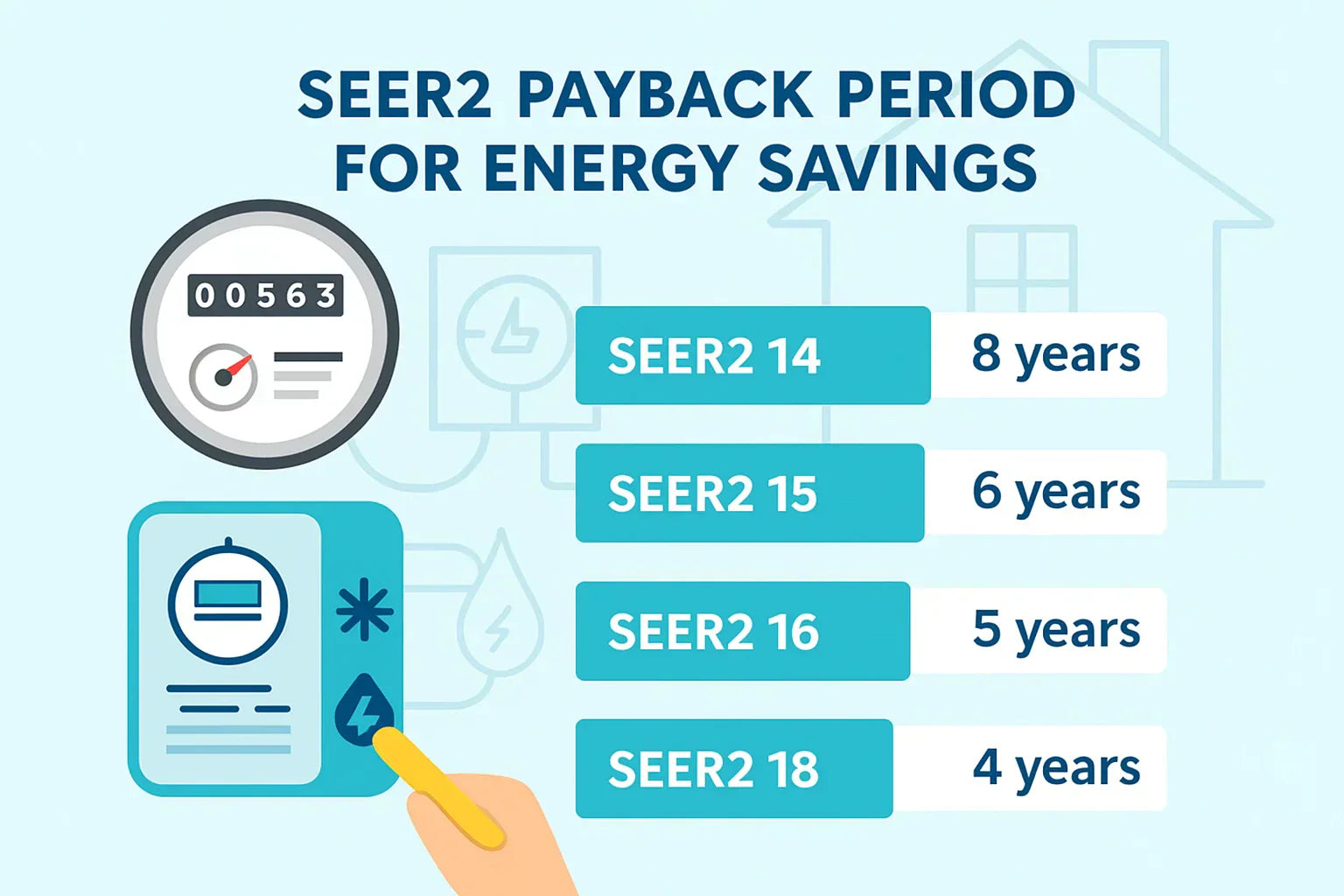By Alex Lane | Your Home Comfort Advocate
You’ve probably seen the SEER2 label pop up when shopping for a new air conditioner or heat pump in 2025. It sounds efficient. It looks important. But when faced with a price tag that’s a few thousand dollars higher, it’s fair to ask: Does a higher SEER2 rating actually save you money?
Short answer? It depends. Long answer — let’s break it down.
🔧 What SEER2 Really Measures
SEER2 stands for Seasonal Energy Efficiency Ratio 2 — an updated measurement of how efficiently a cooling system runs under real-world conditions. It replaced the older SEER standard in 2023, thanks to new DOE testing protocols (called M1).
The higher the SEER2, the less electricity your unit uses to deliver the same cooling output. And that can mean lower energy bills — if the conditions are right.
Want a deeper dive into how SEER2 works and why the industry made the change? Start here:
👉 What is SEER2 and Why It Matters
💸 SEER2 vs. Operating Costs: The Math
H3: Efficiency Equals Savings — in Theory
Here’s the basic rule: every time you bump up your SEER2 rating, your unit gets more efficient. That means less electricity used per BTU of cooling — and lower utility bills.
Example:
-
A 14.3 SEER2 unit might cost $300/year to run in a hot climate.
-
A 16.2 SEER2 unit might cost $250/year for the same cooling output.
That’s a $50/year savings. Over 10 years, it adds up.
🔗 ENERGY STAR Central AC Savings Calculator
H3: Break-Even Point Calculation
Now let’s talk ROI.
If that 16.2 SEER2 unit costs $1,200 more up front than the 14.3 model, and saves you $50/year, you’d need 24 years to break even. That’s beyond the average lifespan of most HVAC systems.
But in hotter regions or homes with high cooling loads, that break-even point drops fast — sometimes down to 7–10 years.
H3: Factors That Shift the Equation
-
Climate Zone: The more you use AC, the faster efficiency pays off.
-
Electricity Rates: Higher rates = more money saved per kWh.
-
System Size: Bigger systems consume more energy, amplifying savings.
🌎 SEER2 and Regional Impact
The U.S. DOE enforces different SEER2 minimums by region — and those minimums help shape what makes sense to buy.
In southern states like Florida, Texas, and Arizona, units work harder for longer. That’s where high-SEER2 systems shine. In the North, where AC use is lighter, those returns are slower.
🔗 U.S. Energy Information Administration – State Electricity Rates
🎁 Rebates and Incentives: More Than Just Energy Bills
H4: Federal Tax Credits
The Inflation Reduction Act offers up to $2,000 in tax credits for qualifying high-efficiency systems — but they must meet SEER2 thresholds.
🔗 IRS – Clean Energy Tax Credits
H4: Local Utility Rebates
Many utilities offer rebates for systems with SEER2 ratings of 15.2 or higher. These can range from $200 to over $1,000 depending on your zip code and system type.
H4: ENERGY STAR Certification
To earn the ENERGY STAR label, systems must exceed SEER2 minimums and meet EER2 and HSPF2 benchmarks.
🤔 When Does Paying More Make Sense?
H4: When High SEER2 is a Smart Move
-
You live in a hot or humid region
-
You plan to stay in your home for 10+ years
-
You pay above-average utility rates
-
You qualify for stackable rebates
H4: When It Might Not Be Worth It
-
You live in a mild climate
-
You’re selling or moving in a few years
-
Your home’s ductwork or insulation limits performance
Efficiency only matters when the system can actually deliver it.
🔍 Pro Tips from the Field
-
Pair SEER2 with HSPF2 if you’re installing a heat pump — both cooling and heating matter
-
Always get a copy of the AHRI certificate to verify ratings
-
Use SEER2 as your baseline — not SEER — for 2025 compliance and savings
-
Make sure the system meets your region’s SEER2 minimum to avoid issues with permits or rebates
📘 Next in the SEER2 Series:
Want to maximize your return with rebates and tax credits? Read our final guide:
👉 SEER2 and HVAC Rebates: How Efficiency Affects Your Eligibility
Alex Lane
Your Home Comfort Advocate







